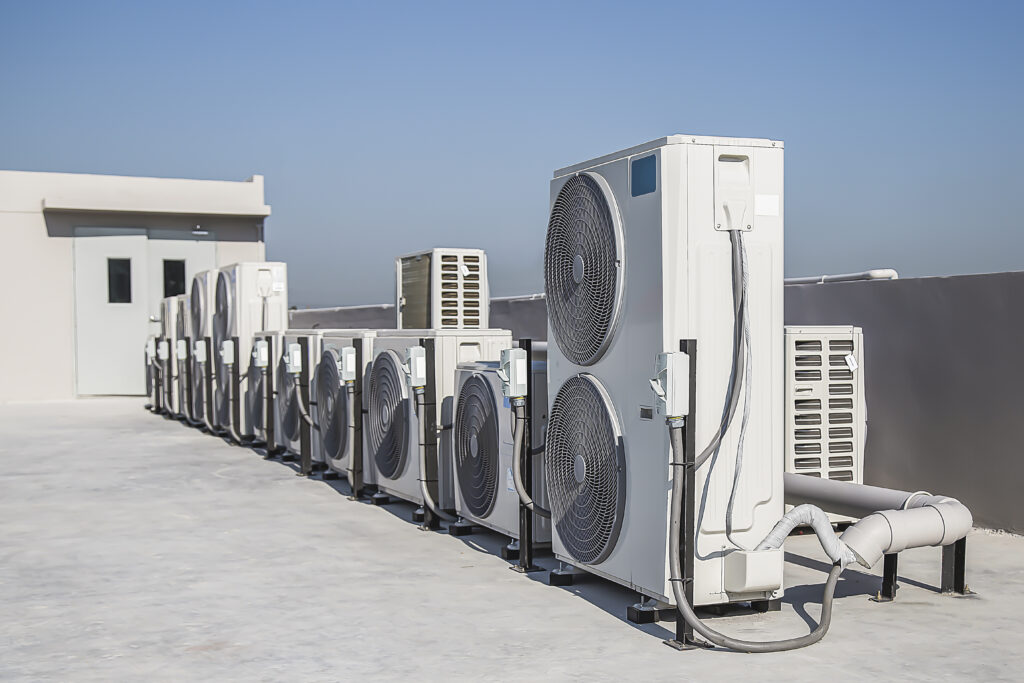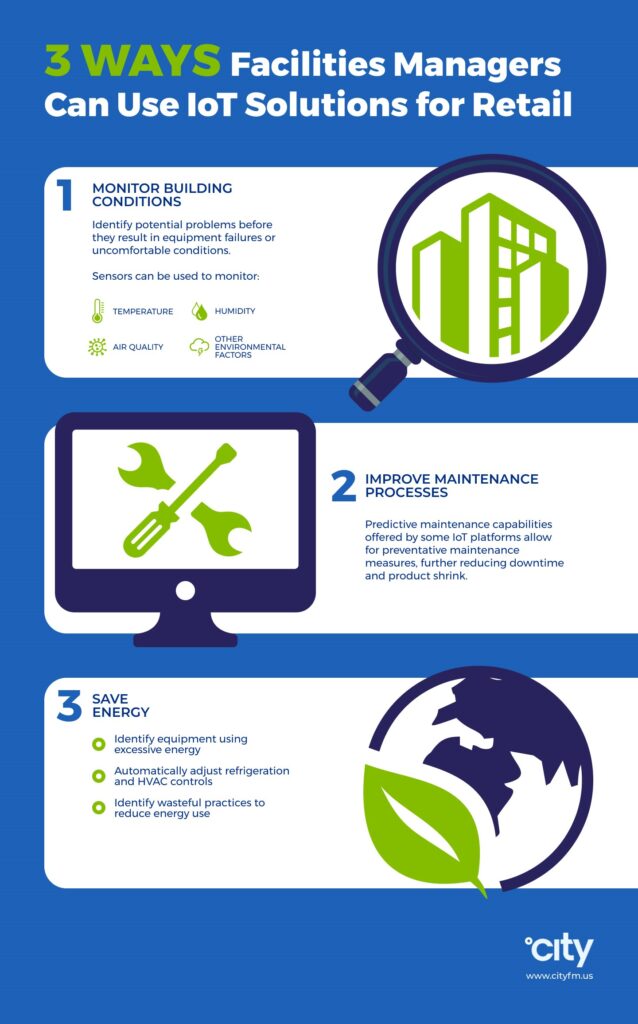
The Internet of Things, or IoT for short, is a hot topic in the retail industry — and for good reason. By connecting devices and machines to the internet, IoT solutions for retailers can collect vast amounts of data that can be used to improve efficiency and make better decisions about everything from predictive equipment maintenance to customer experience.
How can IoT help retail?
Retailers are under constant pressure to improve operational efficiency while also delivering a superior customer experience. Now, IoT solutions for retail can help leaders transform their business to achieve both goals. For example, grocery retailers using the IoT can reduce costs by as much as 15 to 30 percent, according to a report by McKinsey.
The IoT can help retailers achieve cost-saving and customer experience objectives by:
- Reducing facilities costs: IoT-enabled devices are changing the way facility managers operate by giving them actionable insights that can help improve facility conditions while also saving on operating costs (more on this later).
- Enhancing inventory management: RFID tags can be used to track inventory in real time, eliminating the need for manual stock inventory. This allows retailers to quickly identify when products are running low and need to be replenished, preventing stockouts, which can frustrate customers and cut into sales.
- Improving customer service: In-store sensors can be used to track customer flow and identify store areas that are becoming overcrowded. This information can then be used to deploy staff to high-traffic areas where they can assist customers. Additionally, mobile apps can be used to send personalized offers and coupons to customers based on their location within the store.
- Automating labor-intensive tasks: By taking care of tasks and processes that were traditionally done manually, IoT solutions for retail can save labor costs and free up employees to do other, more value-added work. This can also help relieve the retail labor crunch by reducing labor needs and improving retention through the elimination of tedious work.
How facilities managers can use IoT asset management
Since the early 2010s, the discipline of facilities management has been transformed by the IoT. Where manual checking and reporting on equipment, maintenance, and day-to-day processes have been the norm, now automated, connected systems can perform these tasks much more efficiently.
While the technology used for IoT facility management can vary, most systems tend to use a network of sensors that collect data and feed it back to a central cloud, where it can be analyzed to inform decision-making. The power of the IoT allows retailers to leverage the value of data to create efficiencies and drive profit.
“Sensors are placed on hundreds or even thousands of sites, and all these systems need to operate effectively together. Without IoT asset management, these separate systems couldn’t talk to each other. For example, although energy management systems (EMS) have been around for 15 to 20 years, they’ve been operating in silos,” said Tony Parkinson, Senior Vice President of West Coast Operations for City Facilities Management. “Now with IoT technology, fully connected systems provide facilities managers with remote visibility and control over their assets.”
Without IoT asset management, these separate systems couldn’t talk to each other…Now with IoT technology, fully connected systems provide facilities managers with remote visibility and control over their assets.Tony Parkinson, Senior Vice President of West Coast Operations for City Facilities Management
Parkinson said IoT asset management has revolutionized how City and its retail customers use data to manage facilities, with over 17 trillion data points being monitored through machine learning solutions across City’s client portfolios. The IoT has been especially transformative in helping grocery stores, superstores, and convenience stores better manage their HVAC and refrigeration systems, which is imperative for protecting highly perishable food products and ensuring food safety.
Retail facilities leaders are using IoT asset management for:
- Monitoring building conditions: Sensors can be used to monitor temperature, humidity, air quality, and other environmental factors to ensure buildings are maintained at optimal conditions. This data can also help identify potential problems before they result in equipment failures or uncomfortable conditions for customers and employees.
- Improving maintenance processes: By monitoring equipment performance in real-time, facility managers can identify issues before they result in downtime or costly repairs. Additionally, predictive maintenance capabilities offered by some IoT platforms allow for preventative maintenance measures before problems arise, further reducing downtime and product shrink.
- Saving energy: Automated HVAC and refrigeration systems controlled by IoT devices can save considerable amounts of energy by identifying equipment that’s using excessive energy and automatically adjusting conditions without human intervention. Real-time data on energy use collected by IoT devices can also help facility managers identify wasteful practices so that they can take steps to reduce energy consumption, helping them meet their company’s sustainable goals.
The Internet of Things promises vast improvements in efficiency for retailers and their facility managers through enhanced inventory management capabilities, improved customer service features, predictive maintenance capabilities, and automated refrigeration and HVAC controls. As more and more devices become connected, the opportunities for transformation will continue to increase, making now the time for retail and facilities leaders to take advantage of the IoT and seize the competitive advantage.



 2016: City US is established in North America, in partnership with Southeastern Grocers (SEG), servicing over 750 supermarkets across 7 southern states.
2016: City US is established in North America, in partnership with Southeastern Grocers (SEG), servicing over 750 supermarkets across 7 southern states. 1985: Willie and Susan Haughey establish City Refrigeration Holdings (UK) Ltd in Glasgow, UK.
1985: Willie and Susan Haughey establish City Refrigeration Holdings (UK) Ltd in Glasgow, UK. 2009: City Australia launches in Melbourne, in partnership with Coles, servicing over 700 supermarkets across the country.
2009: City Australia launches in Melbourne, in partnership with Coles, servicing over 700 supermarkets across the country. 2015: City Asia launches in Kuala Lumpur, Malaysia, in partnership with Dairy Farm, servicing over 205 supermarkets across the region.
2015: City Asia launches in Kuala Lumpur, Malaysia, in partnership with Dairy Farm, servicing over 205 supermarkets across the region.